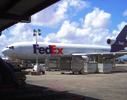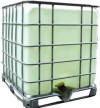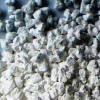| Mubychem Group, established in 1976, is the pioneer manufacturer of Calcium Chloride Anhydrous, Pharmaceutical, Fragrance & Flavor chemicals in India. Mubychem Group has several manufacturing facilities spread across Gujarat and Mumbai India and world wide contacts and toll manufacturers. We are exporting globally to countries like USA, Canada, Europe, UAE, South Africa, Tanzania, Kenya, Egypt, Nigeria, Uganda, Turkey, Mexico, Brazil, Chile, Argentina, Dubai etc. |
The participating units have one or more accreditations like FDA - GMP approval; ISO-9001 Certified; "REACH"registered; ISO-22000; Kosher Certified;Halal Certified; HACCP. We offer Pure & IP BP USP FCC Food Grade ACS AR Analytical Reagent Grades of Chemicals | |







Calcium Chloride Anhydrous Manufacturers MSDS Sheet
Calcium Chloride BP USP ACS Analytical Reagent Food Grade
For MSDS Sheet Click
CaCl2 Anhydrous MSDS Sheet
CaCl2 Fused Dihydrate MSDS Sheet
CaCl2 Hexahydrate Solution MSDS Sheet
Calcium Chloride
Fused, Anhydrous, Lumps, Powder, Crystals, Dihydrate, Hexahydrate, Tablets, Pellets, Solution, Brine
Also IP BP Ph. Eur. USP ACS AR LR FCC Food Grades


Calcium Chloride MSDS Sheet, Material safety Data Sheet
1. Product Identification
Synonyms: Calcium Dichloride; Calcium Di Chloride
CAS No.: 10043-52-4
Molecular Weight: 110.98
Chemical Formula: CaCl2 (Calcium Chloride Anhydrous)
2. Composition/Information on Ingredients
Ingredient: Calcium Chloride Anhydrous
CAS No.: 10043-52-4
Percent: 93 - 100%
Hazardous: Yes
3. Hazards Identification
Emergency Overview
WARNING! CAUSES IRRITATION TO SKIN, EYES AND RESPIRATORY TRACT. HARMFUL IF SWALLOWED OR INHALED.
Health Rating: 1 - Slight
Flammability Rating: 0 - None
Reactivity Rating: 2 - Moderate
Contact Rating: 3 - Severe
Lab Protective Equip: GOGGLES; LAB COAT
Storage Color Code: Green (General Storage)
Potential Health Effects
Inhalation: Calcium Chloride granular material does not pose a significant inhalation hazard, but inhalation of dust may cause irritation to the respiratory tract, with symptoms of coughing and shortness of breath. If inhaled, remove to fresh air. If not breathing, give artificial respiration. If breathing is difficult, give oxygen. Get medical attention.
Ingestion: Do NOT induce vomiting unless directed to do so by medical personnel. Never give anything by mouth to an unconscious person. If large quantities of this material are swallowed, call a physician immediately. Loosen tight clothing such as a collar, tie, belt or waistband.
Skin Contact: Calcium Chloride solid may cause mild irritation on dry skin; strong solutions or solid in contact with moist skin may cause severe irritation, even burns.
Eye Contact:Check for and remove any contact lenses. In case of contact, immediately flush eyes with plenty of water for at least 15 minutes. Cold water may be used. Get medical attention.
Chronic Exposure: No information found.
Aggravation of Pre-existing Conditions: No information found.
4. First Aid Measures
Inhalation: Remove to fresh air. If not breathing, give artificial respiration. If breathing is difficult, give oxygen. Get medical attention.
Ingestion: Induce vomiting immediately as directed by medical personnel. Never give anything by mouth to an unconscious person. Get medical attention.
Skin Contact: Wipe off excess material from skin then immediately flush skin with plenty of water for at least 15 minutes. Remove contaminated clothing and shoes. Get medical attention. Wash clothing before reuse. Thoroughly clean shoes before reuse.
Eye Contact: Immediately flush eyes with plenty of water for at least 15 minutes, lifting lower and upper eyelids occasionally. Get medical attention immediately.
Note to Physician: Oral ingestion may cause serum acidosis.
5. Fire Fighting Measures
Fire: Calcium Chloride is not considered to be a fire hazard.
Explosion: Calcium Chloride is not considered to be an explosion hazard.
Fire Extinguishing Media: Use any means suitable for extinguishing surrounding fire.
Special Information: In the event of a fire, wear full protective clothing and NIOSH-approved self-contained breathing apparatus with full face piece operated in the pressure demand or other positive pressure mode. At high temperatures or when moistened under fire conditions, it may produce toxic or irritating fumes.
6. Accidental Release Measures
Small Spill: Use appropriate tools to put the spilled solid in a convenient waste disposal container. Finish cleaning by spreading water on the contaminated surface and dispose of according to local and regional authority requirements.
Large Spill: Use a shovel to put the material into a convenient waste disposal container. Finish cleaning by spreading water on the contaminated surface and allow to evacuate through the sanitary system.
7. Handling and Storage
Keep Calcium Chloride in a tightly closed container, stored in a cool, dry, ventilated area. Protect against physical damage. Moist calcium chloride and concentrated solutions can corrode steel. When exposed to the atmosphere, calcium chloride will absorb water and form a solution.
8. Exposure Controls/Personal Protection
Airborne Exposure Limits:
None established.
Ventilation System: A system of local and/or general exhaust is recommended to keep employee exposures as low as possible. Local exhaust ventilation is generally preferred because it can control the emissions of the contaminant at its source, preventing dispersion of it into the general work area. Please refer to the ACGIH document, Industrial Ventilation, A Manual of Recommended Practices,
most recent edition, for details.
Personal Respirators (NIOSH Approved): For conditions of use where exposure to dust or mist is apparent and engineering controls are not feasible, a particulate respirator (NIOSH type N95 or better filters) may be worn. If oil particles (e.g. lubricants, cutting fluids, glycerin, etc.) are present, use a NIOSH type R or P filter. For emergencies or instances where the exposure levels are not known, use a full-face positive-pressure, air-supplied respirator. WARNING: Air-purifying respirators do not protect workers in oxygen-deficient atmospheres.
Skin Protection: Wear protective gloves and clean body-covering clothing.
Eye Protection: Use chemical safety goggles and/or full face shield where dusting or splashing of solutions is possible. Maintain eye wash fountain and quick-drench facilities in work area.
Other Control Measures: Maintain good housekeeping in work area. Dust deposits on floors and other surfaces may pick up moisture and cause the surfaces to become slippery and present safety hazards.
9. Physical and Chemical Properties
Appearance: Calcium Chloride is white or gray-white granules.
Odor: It is odorless.
Solubility: It is freely soluble in water, exothermic.
Density: Calcium Chloride has specific gravity of 2.15
pH: 8 - 9 Aqueous solution of Calcium Chloride
% Volatiles by volume @ 21C (70F): 0
Boiling Point: > 1600C (> 2912F)
Melting Point: 772C (1422F)
Vapor Density (Air=1): No information found.
Vapor Pressure (mm Hg): No information found.
Evaporation Rate (BuAc=1): No information found.
10. Stability and Reactivity
Stability: Calcium Chloride is stable under ordinary conditions of use and storage. Substance will pick up moisture from the air and go into solution if exposed in open containers.
Hazardous Decomposition Products: It emits toxic chlorine fumes when heated to decomposition. Calcium Chloride may form hydrogen chloride in presence of sulfuric or phosphoric acids or with water at elevated temperatures.
Hazardous Polymerization: Will not occur.
Incompatibilities: Methyl vinyl ether, water, zinc, bromine trifluoride, mixtures of lime and boric acid, barium chloride, and 2-furan percarboxylic acid. Metals will slowly corrode in aqueous calcium chloride solutions. Aluminum (and alloys) and yellow brass will be attacked by calcium chloride.
Conditions to Avoid: Incompatibles.
11. Toxicological Information
Oral rat LD50: 1000 mg/kg. Investigated as a tumorigen and mutagen.
12. Ecological Information
Environmental Fate: Based on available information for Calcium Chloride anhydrous, this material will not biodegrade or bio accumulate.
Environmental Toxicity: The LC50/96-hour values for fish are over 100 mg/l.
13. Disposal Considerations
Whatever cannot be saved for recovery or recycling should be managed in an appropriate and approved waste disposal facility. Processing, use or contamination of this product may change the waste management options. State and local disposal regulations may differ from federal disposal regulations. Dispose of container of Calcium Chloride and unused contents in accordance with federal, state and local requirements.
14. Transport Information
Calcium Chloride is not regulated.
15. Regulatory Information
SARA 311/312: Acute: Yes; Chronic: No; Fire: No; Pressure: No
Reactivity: No (Pure / Solid)
TSCA: All components are listed or are exempt.
CERCLA Section 103 RQ(lb.): No
RCRA Section 261.33: No
Chemical Weapons Convention: No; TSCA 12(b): No; CDTA: No
California Proposition 65: Not listed.
HMIS (U.S.A.):
Health Hazard: 2
Fire Hazard: 0
Reactivity: 1
Personal Protection: C
National Fire Protection Association (U.S.A.):
Health: 2
Flammability: 0
Reactivity: 2
Specific hazard:
Protective Equipment:
Gloves (impervious). Synthetic apron. Wear appropriate respirator when ventilation is inadequate. Safety glasses.
EINECS: Listed (233-140-8)
DSCL (EEC):
R36/37/38- Irritating to eyes, respiratory system and skin. S22- Do not breathe dust. S24/25- Avoid contact with skin and eyes.
S26- In case of contact with eyes, rinse immediately with plenty of water and seek medical advice.
S2- Keep out of the reach of children. S22- Do not breathe dust. S24- Avoid contact with skin.
Australian Hazchem Code: None allocated.
Poison Schedule: None allocated.
WHMIS (Canada): CLASS D-2B: Material causing other toxic effects (TOXIC).
DSCL (EEC):
R36- Irritating to eyes. S2- Keep out of the reach of children. S22- Do not breathe dust. S24- Avoid contact with skin.
16. Other Information
Disclaimer:
**********************************
Our company provides this Calcium Chloride MSDS information sheet in good faith but makes no representation as to its comprehensiveness or accuracy. This Calcium Chloride MSDS sheet is intended only as a guide to the appropriate precautionary handling of the material by a properly trained person using this product. Individuals receiving the information must exercise their independent judgment in determining its appropriateness for a particular purpose.
**********************************
Calcium Chloride Manufacturers
MUBYCHEM GROUP
CHINCHBUNDER, MUMBAI 400009, INDIA
TEL: (OFFICE) 91-22-23774610, 91-22- 23723564. 91-22-23728264
e-mail: anmol@pcmenergy.com

Copyright and Usual Disclaimer is Applicable.
Global or International Calcium Chloride Anhydrous Fused Dihydrate BP USP... Suppliers, Exporters, Importers, Manufacturers
If I give you “My Word” Nobody can undo it.
If I sign an “Agreement” my Lawyer will undo it
Perfection is made up of small thing but it is not small.
